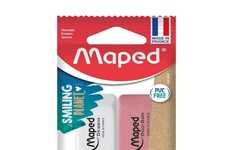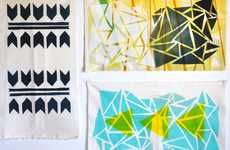
Whitelines Turns Writing Upside Down by Bleaching the Lines, Not the Paper
Innospotter — February 7, 2010 — Eco
References: whitelines.se & whitelines.se
Swedish-based Whitelines has found a great way to reduce the environmental impact of paper usage by simply flipping common sense upside down. Instead of bleaching the entire paper before printing dark lines on it, Whitelines basically just bleaches the lines. The result is a typographic design experience that will help any piece of writing look better.
Whitelines products are seen used at business schools and company letters as a way to brand themselves as eco-aware. Whitelines paper is only a bit more expensive than regular paper, but way cooler.
Whitelines products are seen used at business schools and company letters as a way to brand themselves as eco-aware. Whitelines paper is only a bit more expensive than regular paper, but way cooler.
Trend Themes
1. Eco-friendly Paper - The trend of using environmentally friendly paper products by bleaching only the lines presents an opportunity for businesses to offer sustainable alternatives and reduce their carbon footprint.
2. Design Experience - The trend of using Whitelines paper for a unique typographic design experience opens up opportunities for graphic designers and creative professionals to create visually appealing content.
3. Brand Sustainability - The trend of using Whitelines paper as a branding tool for business schools and companies to showcase their eco-awareness creates opportunities for businesses to align their brand with sustainability values.
Industry Implications
1. Stationery - The stationery industry can tap into the trend of eco-friendly paper products to provide sustainable and visually appealing writing materials.
2. Graphic Design - The graphic design industry can leverage the trend of using Whitelines paper to offer unique design experiences and create visually stunning content.
3. Education - The education industry can embrace the trend of using Whitelines paper to promote sustainability and eco-awareness among students and educational institutions.
2.2
Score
Popularity
Activity
Freshness






















